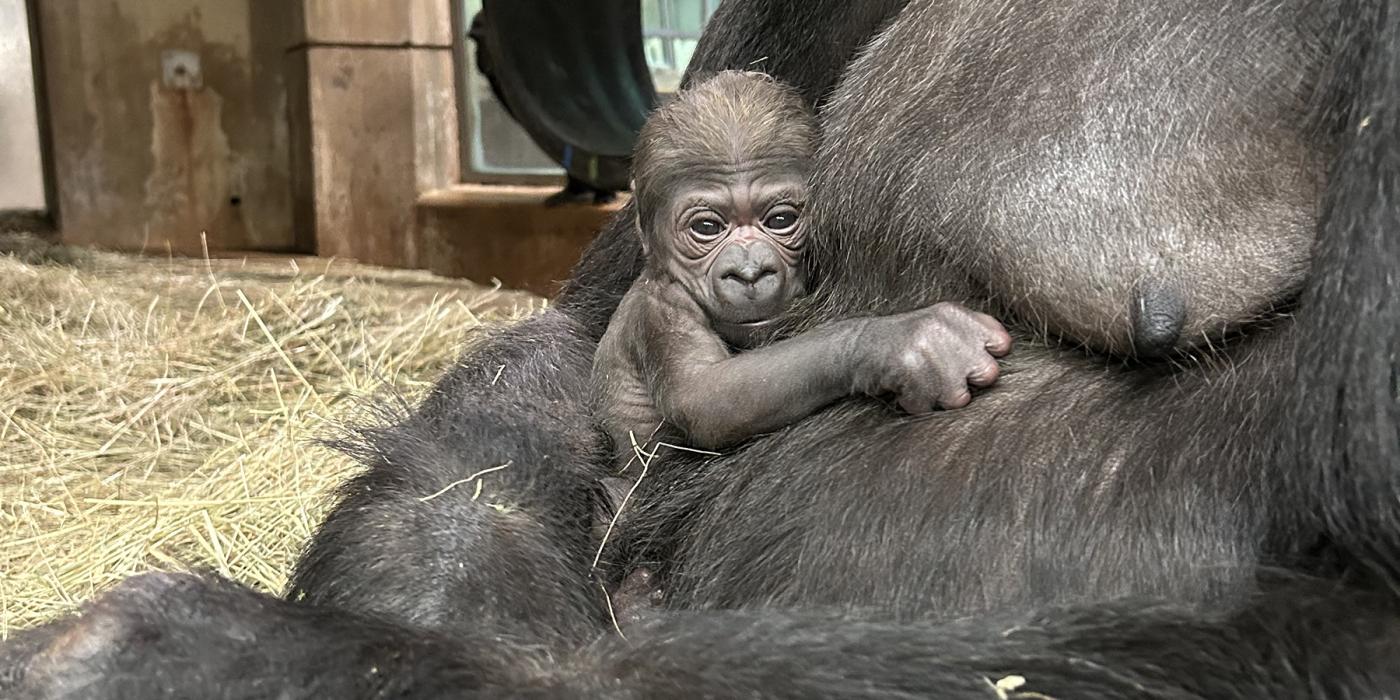Get To Know Our Gibbons

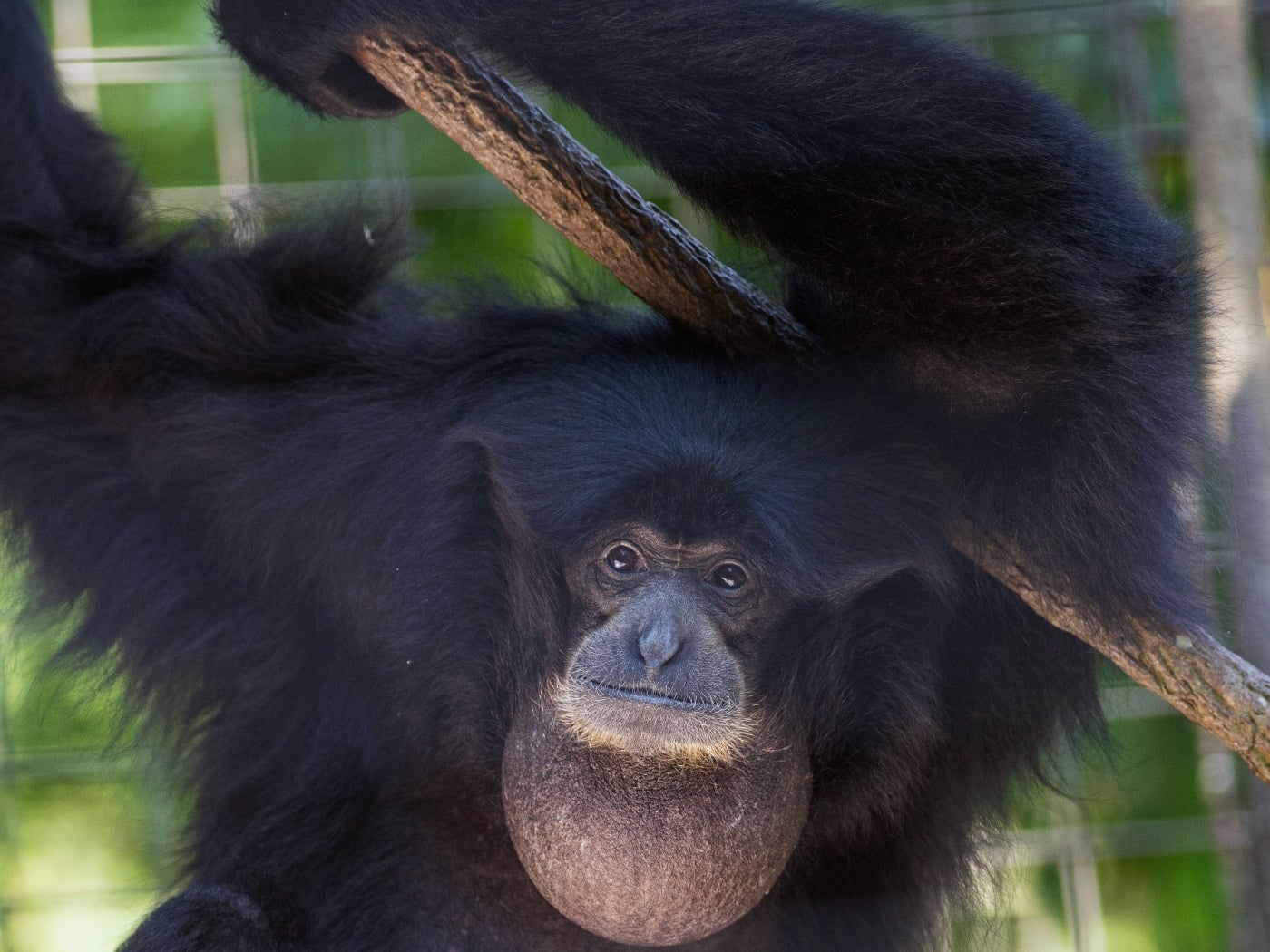
What do you enjoy most about working with siamangs?
Gibbons, including siamangs, are my favorite animals, so how could I not enjoy working with a species that is so near and dear to my heart? Gibbons are classified as small apes, but they have huge personalities in tiny packages. The Primate team cares for two siamangs: a 33-year-old female named Ronnie and a 25-year-old male named Bradley.
Between the two, Bradley is more goofy, eager and energetic. Sometimes, when he watches us set up new enrichment items for him to investigate and explore, he will run around while making a soft booming noise. This lets us know he is excited and ready to play!
Our older siamang, Ronnie, tends to be more deliberate with her actions. She is calm, sweet and determined. While Bradley moves quickly between puzzle feeders and tries to get as many treats as he can, Ronnie will take her time and work on a single feeder before moving on to the next one. She is extremely intelligent and has learned how to easily open certain enrichment items.
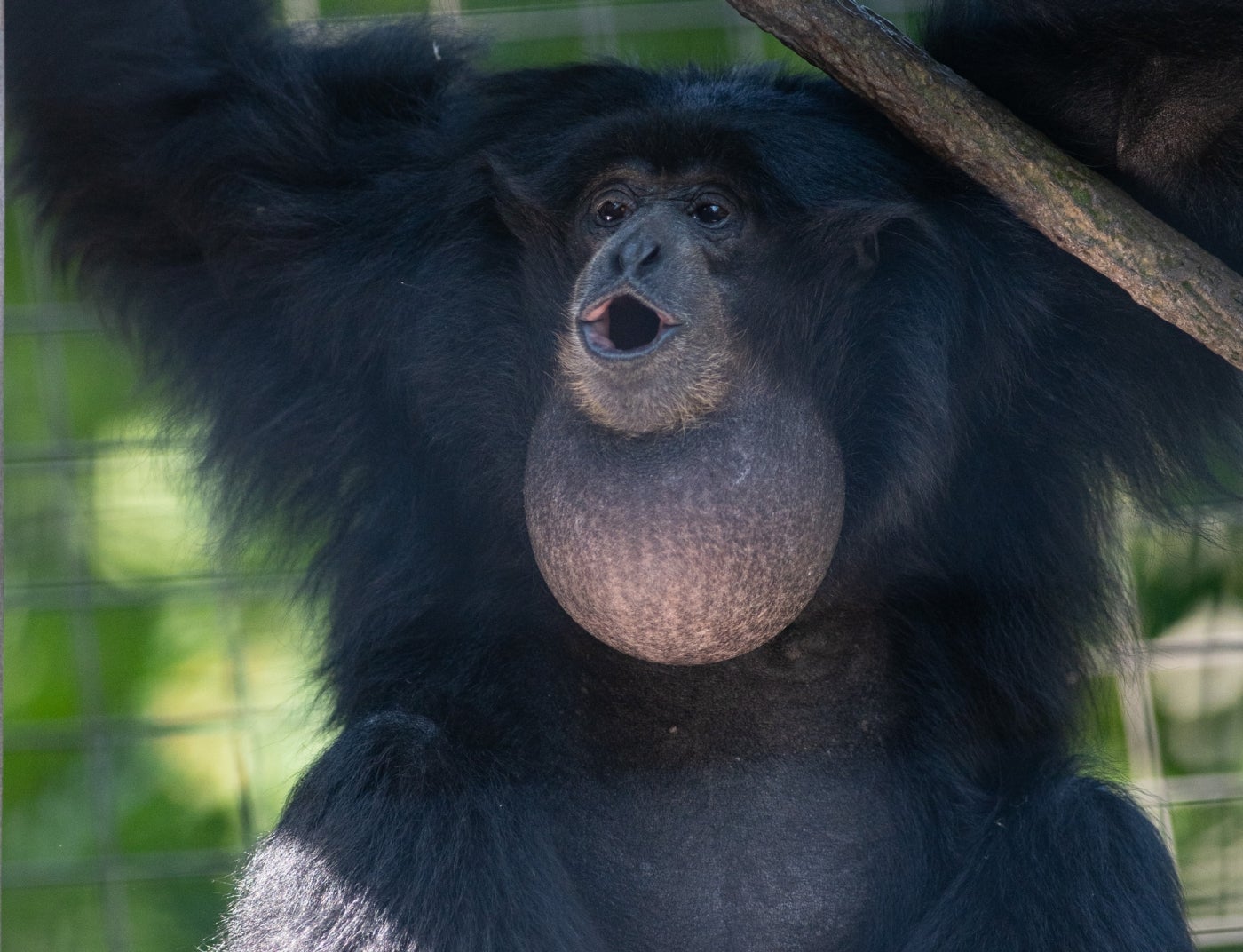
What makes siamangs so charming?
Many things! To start, their beautiful calls match their fun personalities. The songs that siamangs sing are enchanting — a medley of deep “booms,” loud “wows” and barks that start slowly and increase in speed. During these calls, siamangs’ throat sacs inflate, heightening their calls so they can be heard from miles away. Brachiating — swinging hand-over-hand through the branches—and other impressive acrobatic displays often accompany these vocalizations. Males and females sing duets together, which helps defend their territory and strengthens their social bond.

How do Bradley and Ronnie spend their day?
Every day, Bradley and Ronnie receive at least four different kinds of enrichment — things they can see, touch, taste and smell — to encourage them to use their natural behaviors. Some items encourage them to explore their habitat, while others require them to think and exercise their minds.
To strike a good balance between physical and mental enrichment, we use a monthly calendar to keep track of when and how our siamangs receive certain items. We have a list of about 40 different items our siamangs can receive, since variety is important with primates! On a typical day, Bradley and Ronnie receive enrichment around 8:30 a.m., 11:30 a.m., 1 p.m. and 2:30 p.m., before keepers leave for the day.
What are their favorite enrichment items?
One of the siamangs’ favorite “puzzles” is actually a food. Many animals, including Bradley and Ronnie, enjoy fruitsicles—frozen treats made of diluted juice that contain chunks of their favorite fruits. They must figure out how to get the fruit inside — do they break them to get to the fruit faster, or do they lick them like popsicles? We can alter how we present the fruitsicles to make things even more fun for them! For example, we can place the fruitsicle in a paper bag as a surprise, or we can freeze a piece of string in the juice so that we can hang the fruitsicle in their habitat.
Suet feeders are another fun and challenging form of enrichment. The siamangs have to figure out how to get the treats out by using their long fingers to manipulate the food. We use a variety of diet items in these feeders, but mealworms seem to be their favorite. We mix the mealworms with hay before placing them in the suet feeder to make foraging a fun challenge!
Repurposed PVC tubes also serve as treat stations. We hang long pieces of PVC on the mesh outside their habitat, then place food inside. These tubes are great for hiding all sorts of goodies for our siamangs to find. Sometimes, we even smear special treats like peanut butter or pureed pumpkin on the inside. Brandley and Ronnie must use their long arms to reach in and retrieve their snacks.
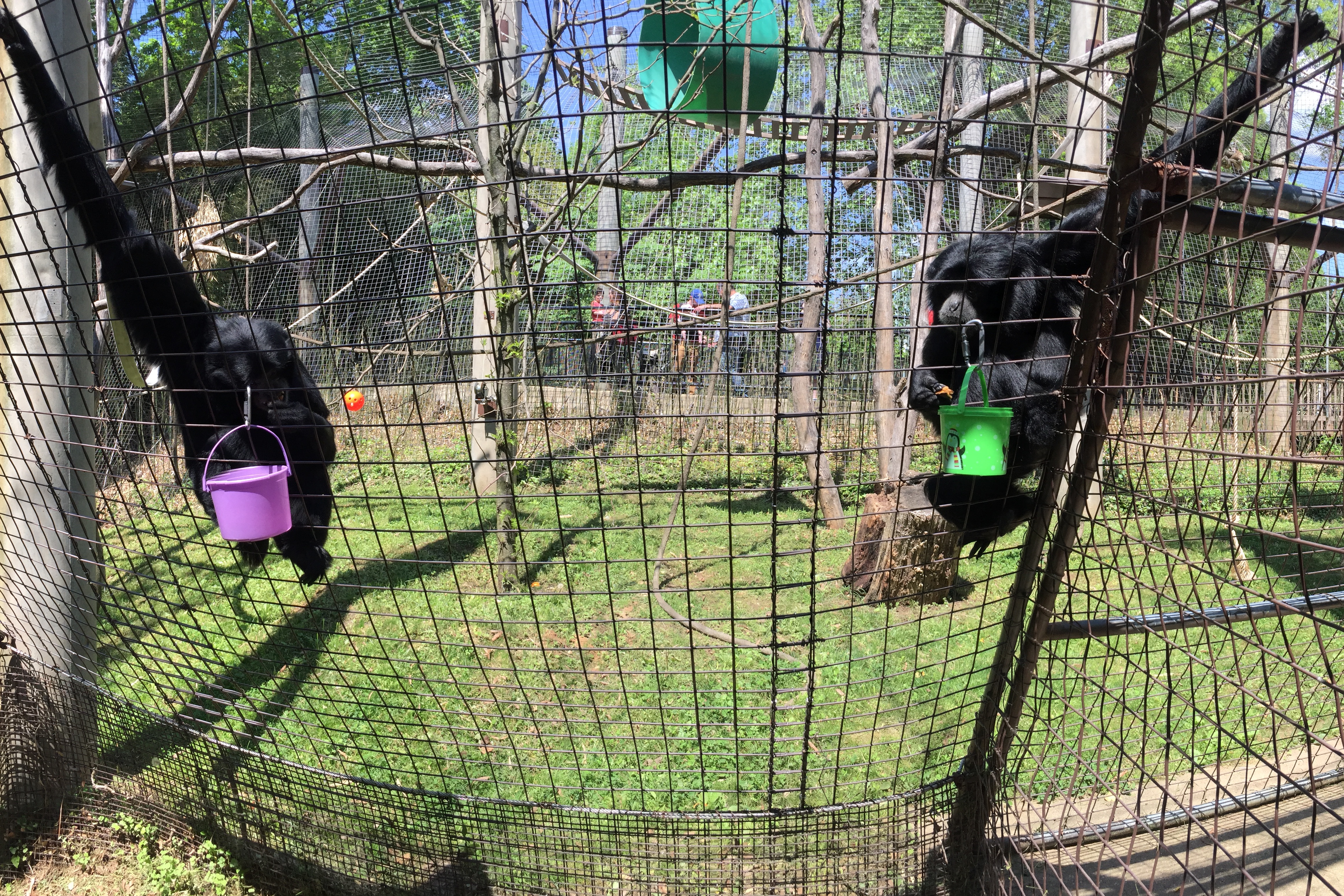
Do siamangs participate in training with keepers?
Yes! All of our primates take part in positive reinforcement training, which allows our animals to voluntarily participate in their own healthcare. Bradley is always eager to train and seems to enjoy the attention — and treats — he gets from participating. Ronnie enjoys training, too, but moves at her own pace.
Both siamangs will show us their hands, feet, belly, head, tongue and hips on cue so that we can check for any injuries. They will also present their ears so we can take their temperatures and step onto scales so we can monitor their weights. As a reward for their participation, Ronnie and Bradley receive some of their favorite treats, like raisins, peanuts and pasta!
Siamangs can be taught almost all of the same husbandry behaviors as our western lowland gorillas and orangutans. However, we modify certain behaviors since siamangs are built differently than great apes. For example, during voluntary injection training sessions, we ask a gorilla to present his or her arm, but we ask our gibbons to present their hips. Since siamang arms are long and sleek, we prefer to train with an area that has more padding and muscle.
What’s the secret to training this species?
It is important to know the personality of the individual you are working with. All our primates have their own personalities and react differently to different stimuli or situations.
For instance, Kibibi, our 11-year old female gorilla, is bold when it comes to training and usually isn’t fazed by any new items like a toothbrush or an ultrasound probe. Ronnie, on the other hand, can be a little more skittish. We take care to slowly introduce new objects or behaviors to ensure she is comfortable before moving on to the next step.
Ronnie is considered geriatric for her species, so some of the behaviors that she and her primary trainer, Val Schultz, are working on include voluntary ultrasounds and blood draws. They are making wonderful progress! This will allow our veterinary team to monitor Ronnie’s health without needing to anesthetize her for a health exam.
We are also proud that both Ronnie and Bradley are allowing voluntary injections. Bradley even received his first dose of the Zoetis COVID-19 vaccine, which is amazing!
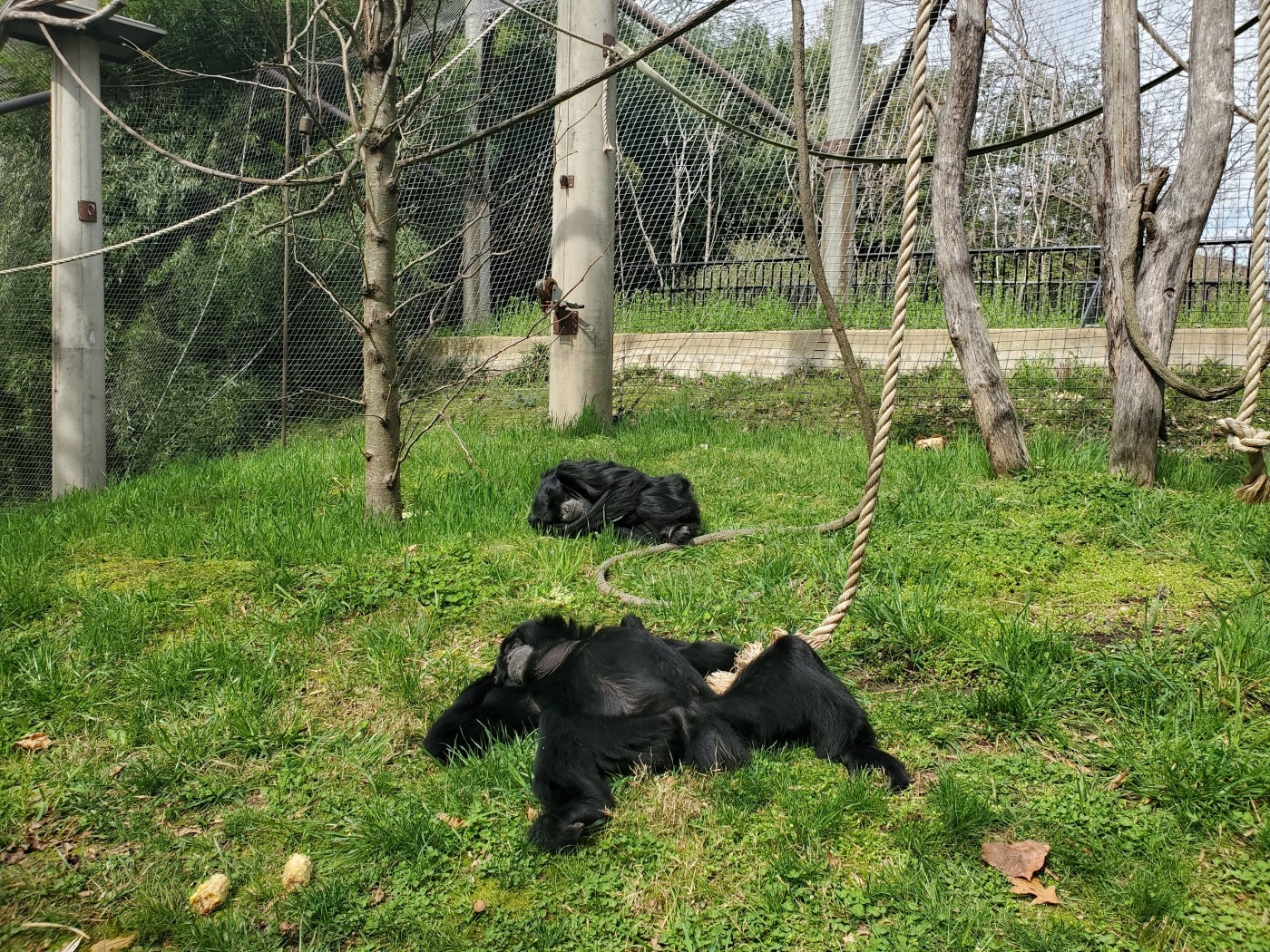
What is the best time to visit the siamangs?
Bradley and Ronnie are most active first thing in the morning, especially if the sun is out. They both enjoy sunbathing and will climb to the top of their habitat to soak up the rays! Since they are native to a tropical climate, we bring them inside if the temperature dips below 50 degrees. They tend to sing in the morning as well, so be sure to listen out for them!
Swing into the Smithsonian’s National Zoo and visit siamangs Bradley and Ronnie at Gibbon Ridge! Want to learn more fun facts about gibbons? Check out How Long Are A Gibbon’s Arms? And More Gibbon Facts.
Related Species:


